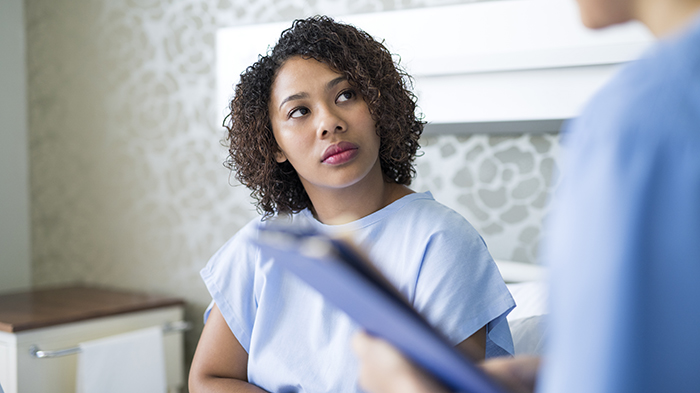
Image via iStock
Breast Cancer Awareness Month takes me back to six years ago when my mother was diagnosed with breast cancer. After surgery, chemotherapy, and radiation, I’m grateful that she remains cancer-free today. It was quite a journey. I recall, among many other things, how distressing it was to watch her lose her hair, and then how grateful I felt watching it slowly return. My mother has always had very thick, straight hair. So to see the waves come through was delightful for both of us. She’s not alone. Many women experience a temporary change in texture from straight to curly — known as chemo curls — and even color in their post-chemotherapy hair growth. But why?
Why Chemo Curls Happen
One theory is that the chemotherapy drugs cannot distinguish between cancerous and healthy cells, like those that are responsible for hair regrowth, so it destroys them all. Most chemotherapy drugs attack rapidly growing cancer cells, but because the cells in our hair roots also grow quickly, they, too, are affected by chemotherapy drugs. As the drugs slowly leave the body and regrowth begins, changes in hair texture and color can occur. Generally, these changes are not permanent — as in the case of my mother whose hair returned to its very straight texture, much to her disappointment.
A Hair Therapist’s Opinion
Shanna Moll is an experienced hair integration specialist and master stylist at Shanna Moll Studio in Austin. Her popular studio provides services, including trichological — the medical and cosmetic study of the hair and scalp — testing and treatment, to women who are experiencing hair loss.
In Moll’s experience with clients who have gone through chemotherapy, chemo curls can last between 18 to 24 months before the hair returns to its original texture. Like the current scientific understanding around chemo curls, Moll agrees, “There are a lot of unknowns.”
Moll works with her clients, each in their own private room, throughout their hair loss experience, whether from chemotherapy or other causes. She sees clients at various stages, such as when hair loss has occurred and clients would like to be fitted for a wig or during natural hair regrowth. Incidentally, like the texture and color of hair that returns, so too can the hair loss vary from person to person. Moll shows her clients how to care for their scalp and regrowth as well as the number of curly-hair styles available to them.
Here are 5 Products for Chemo Curls to Make Your Re-Growth Journey Easier.
Embracing the Curls
In my research for this article, I came across online posts on how to “banish” and “rid” oneself of chemo curls. I was struck by the similarity to what some naturally curly-haired women feel before they are ready to embrace their curls.
As the daughter of a breast cancer survivor, and during this most important month, I sincerely wish strength and health to all of you who on your own breast cancer journey. I would also like to encourage you to embrace your hair regrowth, especially if it’s chemo curls. May you wear them with pride.
Here’s a Beginner’s Guide to Wearing Your Hair Curly.
Want More?
Science might not have a great answer for why hair comes back curly after chemotherapy, but we do know the women who have been through it! Get the personal side to chemo curls, and how this woman survived the ordeal.
We would like to hear from you. What has your cancer journey been like? And how do you feel about your chemo curls?
This article has been updated. Thank you to everyone who has shared your story in the comments and in our social media community!
